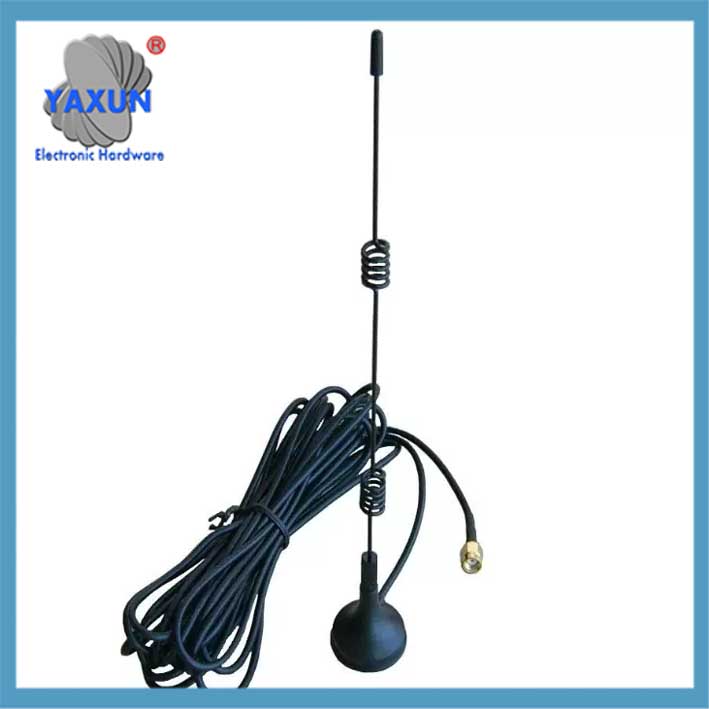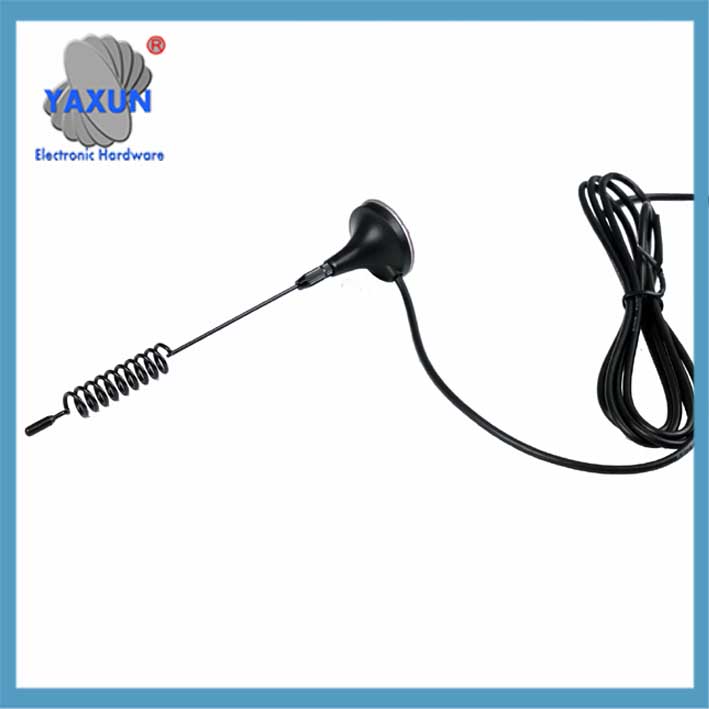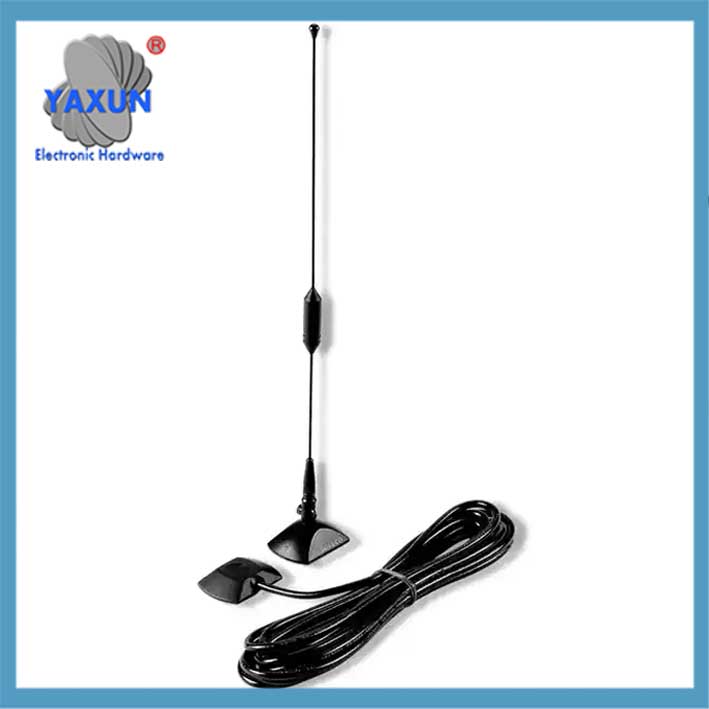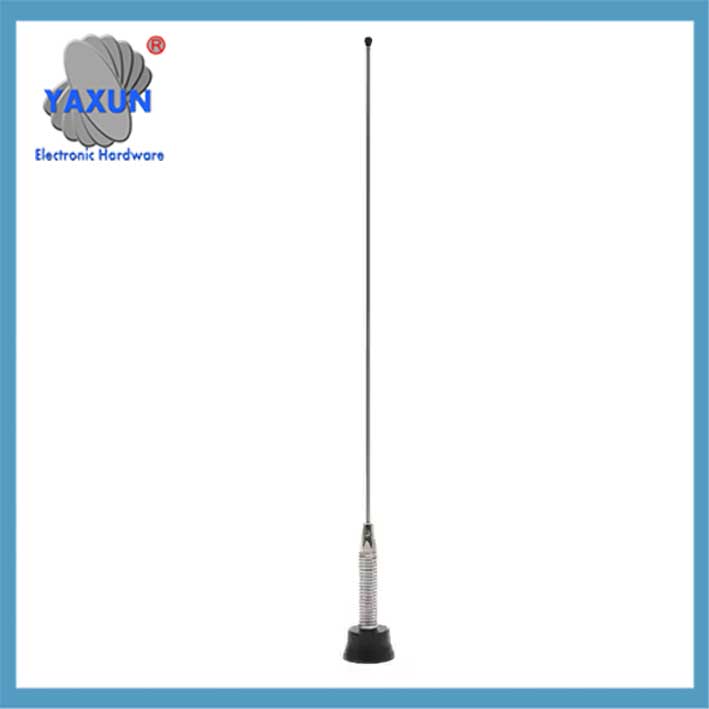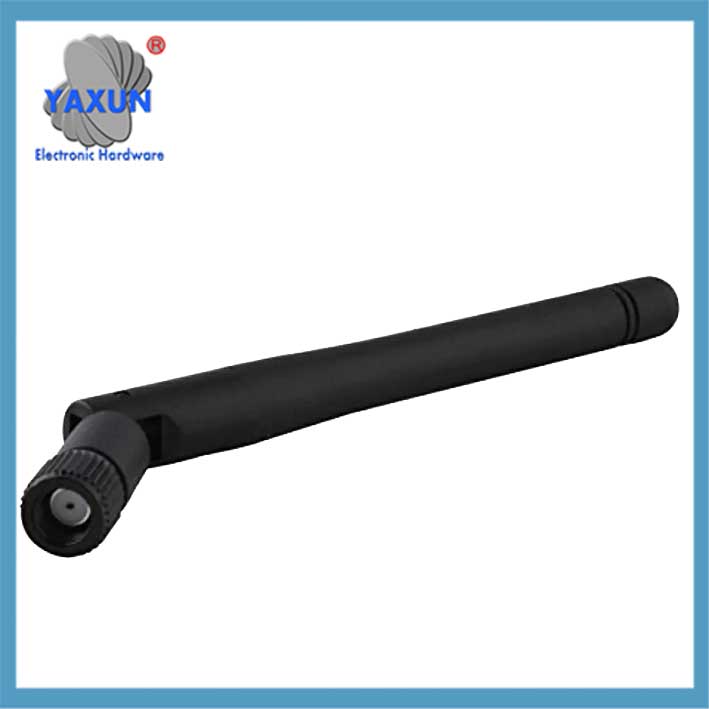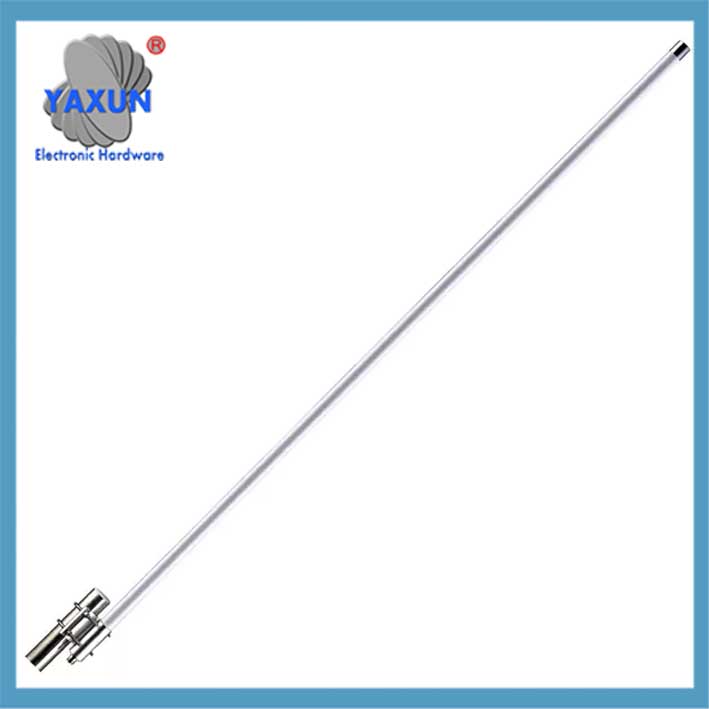termék kategóriák
Termékcímkék
Mágneses tokmányantenna kínai beszállító
Mágneses tapadókorongos antenna (mágneses antennának is nevezik) egy olyan antenna, amely tapadókoronggal ellátott mágneses talpat használ a könnyű rögzítés érdekében fém vagy nem fém felületekre. Ezek az antennák úgy működnek, hogy a rádióhullámokat elektromos jelekké alakítják adás vagy vétel céljából. A gyártás magában foglalja az antennaelem gyártását, a mágneses alap, és a tapadókorongot, jellemzően olyan anyagokat használnak, mint a rézhuzal, fém, és gumi.
Mágneses szívókorongos antenna technológia elemzési és alkalmazási útmutató
én. Meghatározás és működési elv
A mágneses tapadókorongos antenna egy kis vezeték nélküli eszköz, amelyet mágneses adszorpcióval rögzítenek, a mágneses anyagok és a rádiófrekvenciás technológia kombinálása a jel vétele és továbbítása érdekében. Alapelemei mágneses rudak (mangán-cink/nikkel-cink-ferrit) és tekercsek, amelyek elektromágneses indukciót használnak az elektromágneses hullámok térbeli szétválasztására, és javítja a jel vételi hatékonyságát a mágneses permeabilitás és a dielektromos állandó szinergiája révén. Az alsó mágneses szívókialakítás lehetővé teszi a gyors rögzítést fémfelületekre (például a járműházak vagy a bázisállomás berendezések), a telepítési folyamat egyszerűsítése.
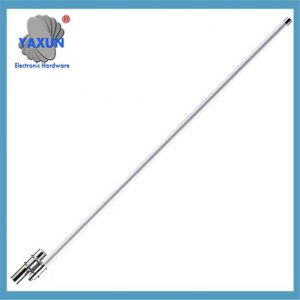 OMB.915.B03F21 915MHz, Egyenes RF antenna |
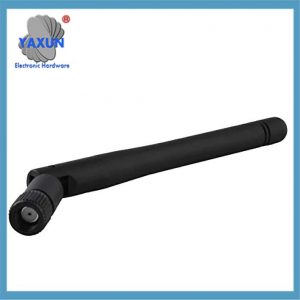 Mágneses szalmaantenna csatlakozó szerelvény |
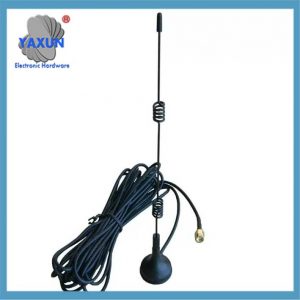 7dbi nagy nyereségű wifi antenna kábellel és mágneses talppal |
Funkció:
Jel vétel/átvitel:
Az antennák nélkülözhetetlenek a rádióhullámok továbbításához és vételéhez. Az adóantenna az elektromos jeleket rádióhullámokká alakítja, míg egy vevőantenna a rádióhullámokat elektromos jelekké alakítja vissza.
Mágneses rögzítés:
A mágneses alap erős és biztonságos rögzítést biztosít fémfelületekhez. A tapadókorong lehetővé teszi a nem fém felületekhez való rögzítést, az antenna elhelyezési lehetőségeinek bővítése.
Omnidirectional vagy Directional:
Néhány antenna, mint az omnidirekcionális antenna, minden irányból képes jeleket fogadni, míg mások meghatározott irányú vételre készültek.
High Gain:
A nagy nyereségű antennákat úgy tervezték, hogy javítsák a jel vételét és átvitelét azáltal, hogy a jelet egy adott irányba koncentrálják.
II.. Tipikus szerkezeti és tervezési jellemzők
Alapkomponensek
Mágneses rögzítőlemez: beépített erős mágneses anyag (mint például a neodímium vasbór), amely mágneses adszorpcióval rögzíti az antenna testét.
Puha gél kúpos lemez: mágneses hevederlemezzel burkolva, rezgéscsillapító puffert biztosít és megakadályozza a fémfelület karcolódását.
radiátor: közös rézrúd vagy ostorantenna, Alacsony ohmos veszteségű kialakítás a nagyfrekvenciás jelátvitel hatékonyságának biztosítása érdekében
Kibővített felület
Támogatja az SMA interfész koaxiális kábelcsatlakozását, kompatibilis a vezeték nélküli modulokkal (mint például az adatátviteli rádió, WiFi/Bluetooth eszközök), és egyes modellek vízálló csatlakozókat tartalmaznak a kültéri tartósság növelése érdekében58.
III.. Osztályozás és teljesítményjellemzők
Közönséges ostor tapadókorongos antenna: könnyű kialakítás, nyereség 5-8dBi, alacsony költség, rövid távú kommunikációra, például intelligens mérőórák leolvasására használható, expressz szekrények, stb.
Rézrúd tapadókorongos antenna: szélessávú lefedettség (700-3700MHz), nyereség akár 13 dBi, erős anti-interferencia, ipari adatátvitelre használják, járműre szerelt rádiós közepes és távolsági kommunikáció.
Kétsávos tapadókorongos antenna: támogatja a 2.4G/5.8G kétsávos adatátvitelt, a mágneses alap elforgatható a szög beállításához, és kompatibilis a több protokollt használó eszközökkel (mint például a WiFi 6 routerek) mobil hotspotok és távfelügyelet.
Termelés:
1. Antenna elem:
Az antenna vezető eleme (PÉLDÁUL., egy ostor, dipól, vagy monopólus) jellemzően rézből vagy más alkalmas vezető anyagból készül.
2. Mágneses alap:
Az alapba erős mágnes van beépítve, gyakran tartós anyagba, például acélba vagy PVC-be vannak burkolva.
3. Szívókorong:
A tapadókorong, gumiból vagy más rugalmas anyagból, felülethez nyomva vákuumot hoz létre, biztonságos csatolás biztosítása.
4. Csatlakozó:
Az antenna egy eszközhöz van csatlakoztatva (PÉLDÁUL., egy rádiót, vevő) csatlakozón keresztül, mint egy SMA-csatlakozó vagy egy BNC-csatlakozó.
5. Minőségellenőrzés:
Az antennát tesztelték, hogy képes-e hatékonyan továbbítani és fogadni a jeleket, olyan intézkedésekkel, mint a VSWR (feszültség állóhullám aránya) ellenőrzés alatt áll.
Anyagok:
Antenna elem: Rézhuzal, fém rudak, vagy más vezetőképes anyagok.
Mágneses alap: Acél, PVC, vagy más erős mágnest tartalmazó tartós anyagok.
Szívókorong: Gumi, PVC, vagy más rugalmas anyagok, amelyek vákuumot tudnak létrehozni.
Csatlakozó: Fém csatlakozók (SMA, BNC) eszközökkel való interfészhez.
Iv.. Tipikus alkalmazási forgatókönyvek
Kommunikáció a járműben
Használja a mágneses alapot a tetőre való gyors felszereléshez, és együttműködnek az adatátviteli rádióval a flottaküldés vagy vészhelyzeti kommunikáció megvalósítása érdekében78. Intelligens Internet of Things
Csatlakoztassa a vezeték nélküli modulokat (mint például a LoRa/Zigbee) eszközök, például automaták és vízmérők távoli adatátviteléhez.
A bázisállomás bővítése
Mágneses telepítés a bázisállomás házára a jellefedettség növelése és a vezetékezés bonyolultságának csökkentése érdekében (mint például a V1.2.2 bázisállomás megoldás).
Autórádiók:
A mágneses antennákat általában az autókban használják AM/FM rádióvételre, rugalmasságot biztosít az antenna elhelyezésében.
Vezeték nélküli kommunikáció:
Különféle eszközökben, például vízszivattyúkban használják, távirányítók, biztonsági kamerák, és több.
Ő Rádió:
Rádióamatőr kommunikációra használják, kényelmes szerelési lehetőségeket kínál.
Professzionális alkalmazások:
Professzionális rádiókommunikációs rendszerekben alkalmazzák, egyszerű telepítést és rugalmasságot kínál.
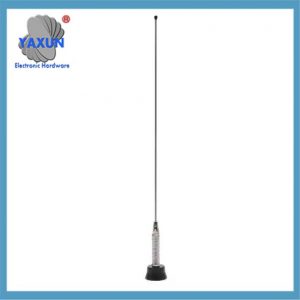 450MHz ~ 470MHz 5.14dbi NMO mágneses egyenes RF antenna |
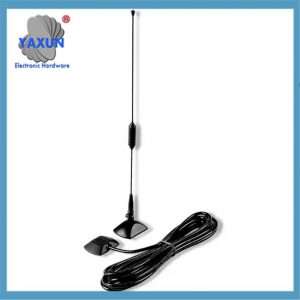 Egyenes RF antenna 5.14dbi mágneses antenna |
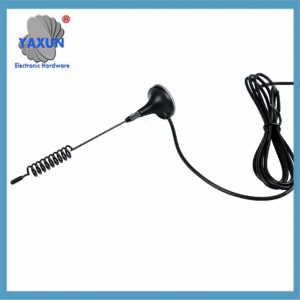 Mágneses tokmányantenna SMA csatlakozóhoz |
V. Telepítési és használati óvintézkedések
Az adszorpciós felület követelményei
Ferromágneses fémsíkra kell rögzíteni (mint például egy acéllemez) hogy elkerüljük a nem fémes vagy ívelt felületek által okozott instabil adszorpciót.
Jeloptimalizálás
Állítsa be az antenna szögét úgy, hogy merőleges legyen a talajra, és maximalizálja a lefedettséget a mindenirányú sugárzási jellemzők segítségével.
Tartsa távol az erős interferenciaforrásokat, például nagyfeszültségű vezetékeket vagy motorokat, és szükség esetén használjon árnyékolt kábeleket a zaj csökkentése érdekében.
Karbantartási pontok
Rendszeresen tisztítsa meg a rozsdát a mágneses tapadókorong felületén, hogy elkerülje a mágneses csillapítást.
Kültéri telepítéshez, vízálló modellek (IP67 szint) előnyben részesítik.
VI. Kiválasztási ajánlások
Sávegyeztetés: Válassza ki a frekvenciasávot a protokollkövetelményeknek megfelelően (mint például a 2.4G Zigbee vagy a 700MHz LTE-M).
Erősítés és távolság: 8-10dBi erősítés javasolt városi területeken, és a 13 dBi-es vagy nagyobb modellek szabadon választhatók.
Méretezhetőség: Az SMA beépülő interfésszel rendelkező antennákat előnyben részesítik a nagy nyereségű komponensek későbbi frissítésének megkönnyítése érdekében.
A mágneses tapadókorongos antennák kulcsfontosságú alkatrészekké váltak az autóiparban és az ipari tárgyak internete területén olyan előnyeik miatt, mint a gyors telepítés és a nagy kompatibilitás.. A modell kiválasztásakor, a helyszíni követelményeket össze kell kapcsolni az elektromágneses környezet átfogó felmérésével.
Vegye fel velünk a kapcsolatot
Várakozás az e -mailre, Belül válaszolunk 12 Órák értékes információkkal, amire szüksége van.
 English
English العربية
العربية bosanski jezik
bosanski jezik Български
Български Català
Català 粤语
粤语 中文(漢字)
中文(漢字) Hrvatski
Hrvatski Čeština
Čeština Dansk
Dansk Nederlands
Nederlands Eesti keel
Eesti keel Suomi
Suomi Français
Français Deutsch
Deutsch Ελληνικά
Ελληνικά עברית
עברית Magyar
Magyar Italiano
Italiano 日本語
日本語 한국어
한국어 Latviešu valoda
Latviešu valoda Bahasa Melayu
Bahasa Melayu Norsk
Norsk پارسی
پارسی Polski
Polski Português
Português Română
Română Русский
Русский Cрпски језик
Cрпски језик Slovenčina
Slovenčina Slovenščina
Slovenščina Español
Español Svenska
Svenska தமிழ்
தமிழ் ภาษาไทย
ภาษาไทย Tiếng Việt
Tiếng Việt
